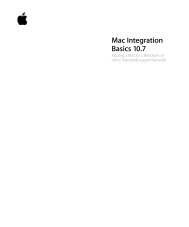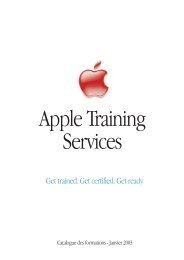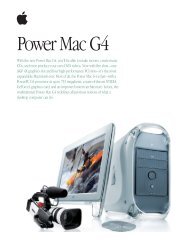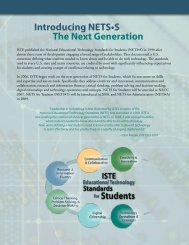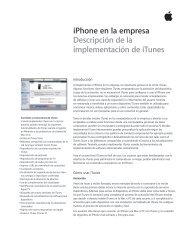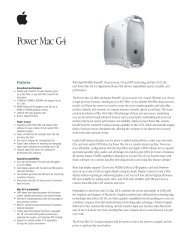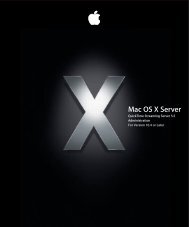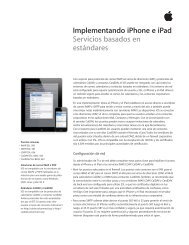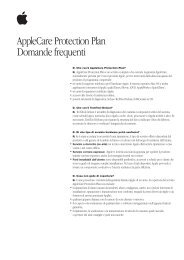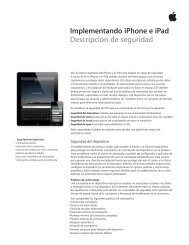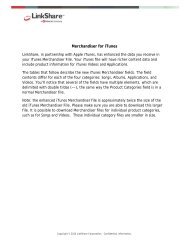In-House App Development Accelerator Guide - Apple
In-House App Development Accelerator Guide - Apple
In-House App Development Accelerator Guide - Apple
Create successful ePaper yourself
Turn your PDF publications into a flip-book with our unique Google optimized e-Paper software.
<strong>In</strong>tegrating shared data. iOS provides powerful connectivity options for sharing information<br />
between apps. Using a URL-based syntax, you can access data from the web, as well as initiate<br />
actions in other installed apps, such as Mail, Calendar, Contacts, and more. Your own app<br />
can also declare a unique URL scheme, allowing any application to launch your app.<br />
• Mail. iOS lets you present a standard Mail or SMS composition interface from within your<br />
app. <strong>In</strong> both cases, you can programmatically preconfi gure the message with recipients<br />
and content, which the user can then edit before sending. Outgoing mail and SMS messages<br />
are automatically handled by the system’s Mail and Messages queues.<br />
• Contacts. With Address Book APIs for shared data, your app can create a new contact or<br />
get existing contact info. By accessing the built-in contact list, your app can enable a user<br />
to associate a contact or business address with an application task or process.<br />
• Calendars. Event Kit allows iOS apps to access event information from a user’s Calendar<br />
database. Fetch events based on a date range or a unique identifi er, receive notifi cations<br />
when event records change, and allow users to create and edit events for any of their<br />
calendars. Changes made to events in a user’s Calendar database with Event Kit are automatically<br />
synced with the appropriate calendar, including business calendars hosted on<br />
CalDAV and Exchange servers.<br />
• Photos. UIKit provides access to the user’s photo library. The photo picker interface provides<br />
controls for navigating the user’s photo library and selecting an image to return to your<br />
app. You also have the option of enabling user editing controls, which let the user pan<br />
and crop the returned image. It can also be used to provide an interface to the camera, so<br />
photos taken can be loaded directly into your app.<br />
Audio and video. Multimedia technologies in the iOS SDK let you implement sophisticated<br />
audio and video capabilities within your app. The Media Player framework supports fullscreen<br />
playback of video fi les, and built-in support for HTTP live streaming makes it easy to<br />
use standard web servers to stream high-quality audio and video content over-the-air. Your<br />
app can also take advantage of Core Audio to generate, record, mix, process, and play audio<br />
in your app. Use Core Animation to add smooth motion and dynamic feedback to the user<br />
interface. Or leverage OpenGL ES for high-performance 2D and 3D graphics.<br />
Planning • Design • <strong>Development</strong> • Deployment<br />
<strong>In</strong>terface Builder, which is integrated directly into the Xcode 4 IDE, makes it simple<br />
to prototype your app. Drag elements to create a full user interface without writing<br />
any code.<br />
19





